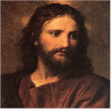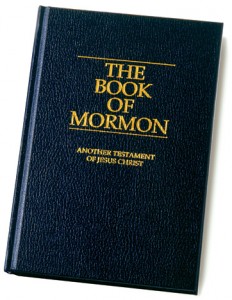|
||
DNA and the Book of Mormon
About 100 genetic studies have been done on about 75 groups out of 500 known Native American groups. These studies do show that those Native American populations, which have been tested, have genetic signatures that closely resemble modern-day Asians. So some geneticists studying population ancestry have drawn the conclusion that the two groups are related to each other. Thus disproving the Book of Mormon, which claims that Native Americans are descendents of the House of Israel. What the book fails to mention is that Mormons, starting with the prophet Joseph Smith, are open to the idea that other races and peoples came to the American continents before and after the groups mentioned in the Book of Mormon. Those other races would have intermarried with the descendants of Lehi. The other races DNA could have been more dominant, thus after centuries almost eliminating the Jewish DNA from their combined descendants. So the DNA of current Native Americans could easily point more to Asiatic origin than Middle Eastern origin. Also, as other geneticist’s have pointed out the process of discovering a people’s ancestry by DNA testing is not an exact science and there are many variables that can change the outcome of the results. The Church of Jesus Christ of Latter-day Saints Official Statement“The Book of Mormon: Another Testament of Jesus Christ is exactly what it claims to be — a record of God’s dealings with peoples of ancient America and a second witness of the divinity of the Lord Jesus Christ. The strongest witness of the Book of Mormon is to be obtained by living the Christ-centered principles contained in its pages and by praying about its truthfulness. Recent attacks on the veracity of the Book of Mormon based on DNA evidence are ill considered. Nothing in the Book of Mormon precludes migration into the Americas by peoples of Asiatic origin…”1 Latter-day References to Other PeopleCritics of the Book of Mormon state that Joseph Smith believed that the Native Americans were descendents of Abraham alone. Yet statements from the prophet do not claim that the Native Americans did not have other ancestors as well. “In a statement made in 1835, Joseph Smith described the visit of an angel to him twelve years earlier: ‘He told me of a sacred record which was written on plates of gold. I saw in the vision the place where they were deposited. He said the Indians were the literal descendants of Abraham.’ In response to the prophet’s comment Mathew Roper, a sociologist at BYU says, “My great-great-grandfather is John Whetten, but it would not be reasonable to assume that in making this statement I am declaring that I have no other ancestors. Joseph Smith’s statement plainly allows for Abraham to be one ancestor among many others.” 2 At one time the Times and Seasons, edited by Joseph Smith and John Taylor (future president of the Church), cited an account of Don Juan Torres, grandson of the last king of the Maya which stated that “the Toltecas themselves descended from the house of Israel, who were released by Moses from the tyranny of Pharaoh, and after crossing the Red Sea, fell into Idolatry. To avoid the reproofs of Moses, or from fear of his inflicting upon them some chastisement, they separated from him and his brethren… passed from one continent to the other, to a place which they called the seven caverns, a part of the kingdom of Mexico.” 3 Hugh Nibley points out the significance of the prophet Joseph Smith being open to the possibility of people, other than those mentioned in the Book of Mormon, coming to America. In 1909 B.H. Roberts, a member of the Seventy, felt that Norseman visiting the American coast as well as migrations from Asia over the Bering Strait were very probable. He made this statement, “The records now in hand, especially that of the Jaredites, are but very limited histories of these people. Thus, even in Jaredite and Nephite times voyages could have been made from America to the shores of Europe, and yet no mention of it be made in Nephite and Jaredite records now known.” 4 Hugh Nibley, renowned LDS historian, believed that other people were led to the Americas by the hand of God. He says, “Now there is a great deal said in the Book of Mormon about the past and future of the promised land, but never is it described as an empty land. The descendants of Lehi were never the only people on the continent, and the Jaredites never claimed to be.” 5 Other scholars compare the Book of Mormon to the Bible in that it is a record of a small group of people in a specific area and is in no wise a record of all the people living in the continent at the time it was written. The Bible just as the Book of Mormon describes the groups that the people came in contact with and does not mention groups outside their immediate knowledge. In 1961, Ariel Crowley, a Book of Mormon scholar stated, “The Book of Mormon is no more the history of all peoples and doings of past ages on the American continents than the Bible is a history of all the peoples and nations of the East. Each covers its own time and provenance and makes no pretense beyond that… The Book of Mormon attests the presence of the blood of Israel. It is not in the least impugned by extraneous proof that other blood, by other migrations, found this land and mingled with the peoples there.”6 It is also of significance to mention that the Book of Mormon was an abridged record made by Mormon compiled from many different plates. There is no knowledge of what the other plates contained or other groups of people that may have been mentioned but whose record of their existence were not included by Mormon in the abridgement. Book of Mormon References to Other PeopleThe Book of Mormon itself gives numerous evidences that point to other people living on the American continent at the time Lehi’s family arrived. At the time Nephi fled into the wilderness, because his older brothers were plotting his death, he says, “I, Nephi, did take my family, and also Zoram and his family, and Sam, mine elder brother and his family, and Jacob and Joseph, my younger brethren, and also my sisters, and all those who would go with me. And all those who would go with me were those who believed in the warnings and the revelations of God; wherefore, they did hearken unto my words.” 7 It is safe to assume that these others who went with Nephi were people who already lived on the continent who believed in his words. At this time a division takes place Nephi refers to his group as the “people of Nephi,” 8 “a term that may be suggestive of a larger society including more than his immediate family.”9 Further evidence that those that accompanied Nephi were not just those of his family is found when the Lord spoke to Nephi saying, “Wherefore, I will consecrate this land unto thy seed, and them who shall be numbered among thy seed, forever, for the land of their inheritance; for it is a choice land, saith God unto me, above all other lands, wherefore I will have all men that dwell thereon that they shall worship me, saith God.” 10 Matthew Roper shares other Book of Mormon evidences in his review of Nephi’s Neighbors: Book of Mormon Peoples and Pre-Columbian Populations. Problems with DNA TestingThe use of DNA testing to discern the ancestry of a modern population is a relatively new science. As such it is continually growing and changing as new developments are made. As noted by John Relethford, renowned geneticist, “Although working in such a young and developing field is exciting, it is also frightening because the knowledge base changes so rapidly”.11 DNA testing cannot determine all previous genetic lineages. Through the testing of Y-chromosome (passed through males) and mitochondrial DNA (passed from mother to child) only a small fraction of an individual’s ancestry can actually be tracked. A study was done in Iceland where DNA tests “traced the matrilineal and patrilineal ancestry of all 131,060 Icelanders born after 1972 back to two cohorts of ancestors, one born between 1848 and 1892 and the other between 1798 and 1742.” 12 The study showed that the number of descendents coming from certain ancestors was skewed, “with the vast majority of potential ancestors contributing one or no descendants and a minority of ancestors contributing large numbers of descendants.”13 The study showed that even after just 150 years the ancestors of the Icelandic people could not correctly be traced back to their original ancestors and instead pointed them all too two common ancestors. Because of this it is conceivable to believe that DNA, which Lehi and his family contributed to the Native American races, could not be seen in present day tribes. Another modern day geneticist explains the limitations with using mitochondrial DNA to identify the origins of the Native Americans:
“With this in mind, let’s imagine we have ten generations of a family tree in front of us, beginning from the top down to the bottom, over the ten generations. If we are only considering MDNA, as we look at any individual in the 10th generation at the bottom of the chart (which, let’s say, represents the current generation), because of the above limitations, we, by no means, have an accurate understanding of the original genetics of this population.” 14 (1) DNA and the Book of Mormon Los Angeles Times, 16 February 2006 (14) Johnson, Cooper. DNA and the Book of Mormon. FAIR – Defending Mormonism.
|


